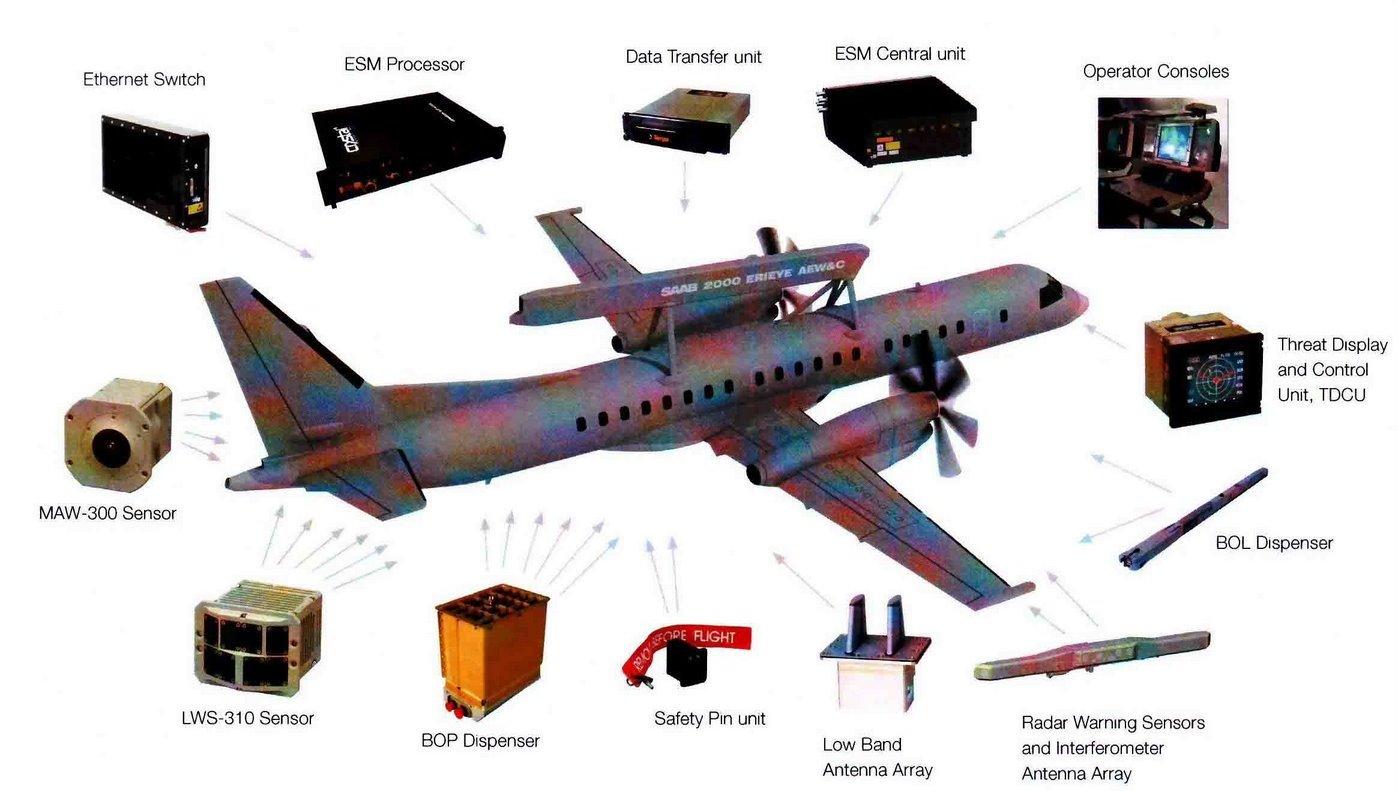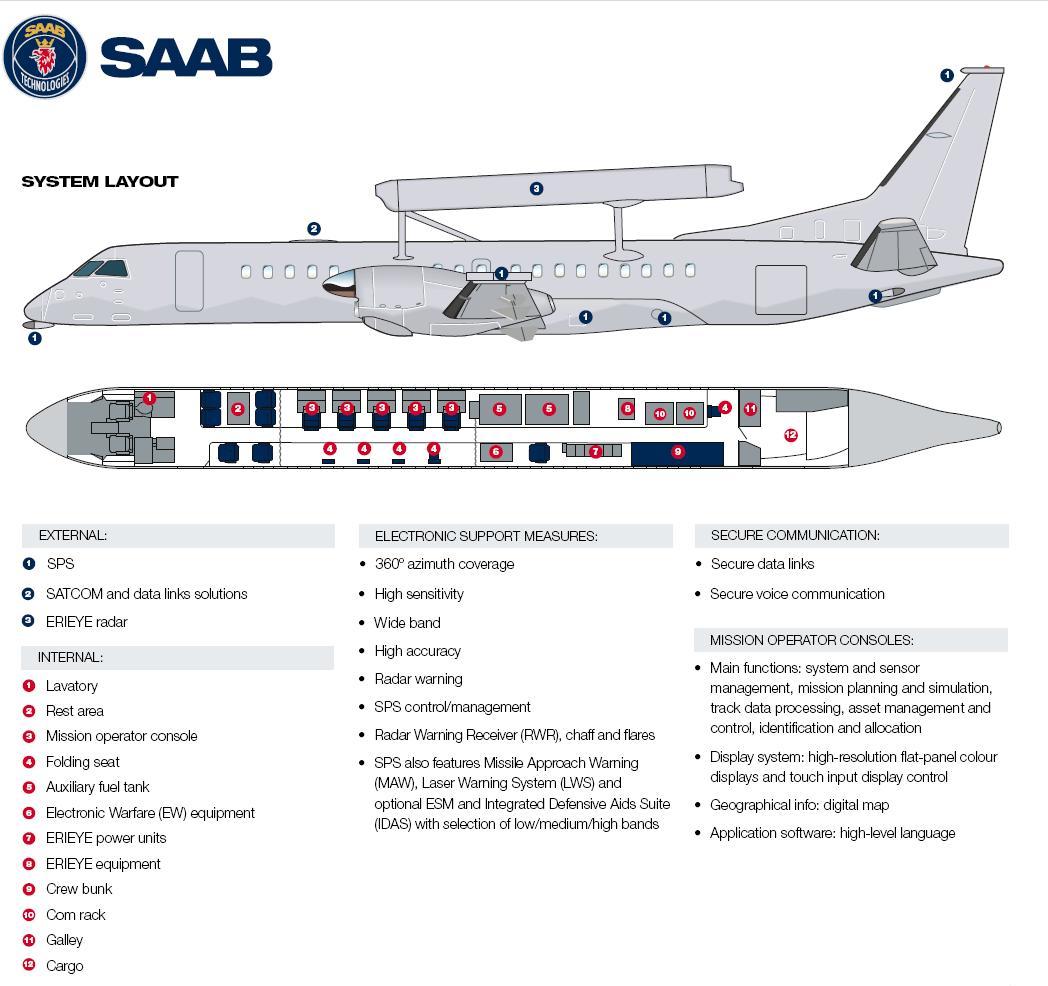The Boeing P-8 Poseidon (formerly the Multimission Maritime Aircraft or MMA) is a military aircraft currently being developed for the United States Navy (USN). The P-8 is being developed by Boeing Defense, Space & Security, modified from the 737-800. It is intended to conduct anti-submarine warfare (ASW) and shipping interdiction and to engage in an electronic intelligence (ELINT) role. This will involve carrying torpedoes, depth charges, SLAM-ER anti-ship missiles, and other weapons. It will also be able to drop and monitor sonobuoys. It is designed to operate in conjunction with the Broad Area Maritime Surveillance unmanned aerial vehicle.
Origins
The Lockheed P-3 Orion ASW aircraft has been in service with the U.S. Navy since 1962.[4] In the mid-1980s the Navy began studies for a replacement aircraft for the P-3, which had its range and time on station capabilities reduced because of increasing weight and was approaching the end of its airframe fatigue life. The Navy specification also required reduced operating and support costs. In 1989, the Navy awarded Lockheed a fixed-price contract to develop the P-7,but the project was canceled the following year.[5]
Boeing and Lockheed Martin were part of a new competition for a replacement aircraft begun in 2000. Lockheed submitted the Orion 21, an updated, new-build version of the P-3 turboprop.[6] Boeing submitted a proposal centered around its 737-800 airliner.[7] BAE Systems offered a new-build version of the Nimrod MRA4, the newest version of the UK's indigenous jet-powered maritime patrol aircraft. However, BAE withdrew from the competition in October 2002, recognizing the political reality that the failure to find a US-based production partner made the bid unrealistic.On 14 May 2004, Boeing was selected winner of the competition.[9] The following month the Navy awarded Boeing a development contract for MMA.[10] The project was planned to be for at least 108 airframes for the U.S. Navy.[11] More orders are possible from the other nations operating over 200 P-3s. Project value is expected to be worth at least $15 billion. Raytheon, Northrop Grumman, Spirit AeroSystems, GE Aviation Systems, Marshall Aerospace, CFMI, BAE Systems, and Marotta are major subcontractors. In July 2004 the U.S. Navy placed an order for five MMA aircraft. The first flight-test aircraft was to be delivered in 2009. Initial operating capability is expected in 2013.[11] The first aircraft, a test aircraft, is to be converted to production standards at a later date. Boeing's MMA aircraft received the P-8A designation on 30 March 2005.
Design phase and testing
Roll-out of the P-8 on 30 July 2009. In mid-2008, the Naval Air Systems Command (NAVAIR) deleted the requirement for the P-8A to be equipped with magnetic anomaly detection (MAD) equipment. This was part of a NAVAIR-directed effort to reduce P-8A aircraft weight by 3,500 lb (1,600 kg) to improve aircraft range and endurance. P-8Is destined for the Indian Navy will continue to retain MAD. The P-8A will use a new hydrocarbon sensor to detect fuel vapors from diesel submarines and other conventionally powered ships. The P-8's first flight occurred on 25 April 2009. The second and third P-8s have flown and begun flight testing by early August 2010.[15] On 11 August 2010, the US DoD approved the P-8 for low-rate production.A P-8 deployed sonobuoys for the first time on 15 October 2010, dropping six sonobuoys in three separate low altitude passes. In 2011, it was found that the ice detection system on the P-8 was defective due to the use of several counterfeit components. It is alleged that these sub-standard parts had been poorly refurbished and sold to P-8 subcontractor BAE Systems as new by a subcontractor in China. The first production P-8 was handed over to the Navy on 4 March 2012. It flew to Naval Air Station Jacksonville, Florida, where it will be used for aircrew training. In February 2012, the aircraft made its mission debut during Bold Alligator 2012, an annual littoral warfare exercise.
Exports and foreign involvement
The U.S. Department of Defense wants to follow a program template similar to that of the F-35 Lightning II Joint Strike Fighter (JSF) program, with international cooperation from prospective MMA users.[21] Boeing publicly identified New Zealand as a potential customer. Italy indicated interest in purchasing MMA aircraft, with fleet support provided by Alitalia in 2004.[23] However, in December 2008, Italy announced the purchase of four ATR 72 turboprop aircraft to replace its aging Atlantic Maritime Patrol Aircraft,[24] possibly as a temporary solution because Italy remained interested in the P-8. A P-8A Poseidon flying along side a P-3 Orion, close to Naval Air Station Patuxent River, Maryland, in 2010. The Australian Minister for Defence announced on 20 July 2007 that the P-8A MMA had been selected as the preferred aircraft to replace the Royal Australian Air Force's fleet of AP-3C Orions in conjunction with a yet-to-be-selected unmanned aerial vehicle. The last RAAF AP-3C is scheduled to be retired in 2018, after nearly 30 years of service.[27] A memorandum of understanding (MOU) will be signed that will help Australia to gain access to classified data and help to input specific requirements.[28] In March 2009, Australia's Chief of Air Force stated that subject to anticipated government approval, the RAAF will begin to add the P-8A to their fleet in 2016. Australia and Canada may each pay up to $300 million in order to have first-tier participation in the MMA project. In January 2008, Boeing proposed the P-8I, a customized export variant of the P-8A, for the Indian Navy.[31] On 4 January 2009, India's Ministry of Defence signed an agreement with Boeing for the supply of eight P-8Is at a total cost of US$2.1 billion. These aircraft would replace Indian Navy's aging Tupolev Tu-142M maritime surveillance turboprops.[32][33][34] Each aircraft will cost about US$220 million.[35] The deal makes India the first international customer of the P-8, and also marks Boeing's first military sale to India.[36] On 4 October 2010, India's Defence Acquisition Council of the Ministry of Defence cleared the purchase of four additional P-8Is.[37] The contract details for the additional aircraft was concluded in 2010,[38] and approved by India in March 2011 bringing the total number of aircraft on order to 12.
The Data Link II communications technology for the P-8I was received by Boeing from Bharat Electronics Limited in April 2010. The communications system will enable exchange of tactical data and messages between Indian Navy aircraft, ships and shore establishments. Boeing will install the system during P-8I final assembly.[40][41][42] The IFF, system from BEL was also handed over to Boeing for integration with P-8I in December 2010.[43] Deliveries of P-8Is are to begin in 2013.[44][45] India plans to order another 12 P-8Is at a later time for a total of 24.
Derivatives
Boeing approached the US Air Force in 2010 about replacing the E-8C Joint STARS fleet with a modified version of the P-8 at the same cost Northrop Grumman proposed for re-engining and upgrading the E-8s.[47][48] The proposed version is named P-8 Airborne Ground Surveillance (AGS) and would integrate an active electronically scanned array (AESA) radar, and have ground moving target indicator (GMTI) and synthetic aperture radar (SAR) capabilities. The main distinguishing feature of the P-8 AGS is pod-mounted radar, fixed to the lower centerline of the fuselage; the pod is lowered so the engine nacelles do not interrupt the radar's line of sight. Two aft ventral fins on lower aft provide stability for the aircraft. The P-8 AGS also uses the P-8A's Raytheon AN/APY-10 multi-mission surface search radar.[50] Boeing has campaigned for a fleet of P-8 AGS aircraft instead of re-engining the E-8s.[51] Thee Air Force's Analysis of Alternatives (AoA) of the JSTARS platform began in March 2010 to review options for performing the JSTARS mission. An initial decision on the AOA was expected in September 2011.
Design
The P-8 is a militarized version of the 737-800 with 737-900-based wings.The airframe uses a 737-800-based fuselage that is similar to but longer than the 737-700-based C-40 Clipper. The P-8 has a strengthened fuselage and 767-400ER-style raked wingtips, instead of the blended winglets available on 737NG variants.The five operator stations (two Naval Flight Officers plus three enlisted Aviation Warfare Operators/Naval Aircrewman) are mounted in a sideways row, along the port side of the cabin. None of these crew stations have windows. One observer window is located on each side of the forward cabin. The P-8 features the Raytheon APY-10 multi-mission surface search radar.[55] The P-8I will feature an international version of the APY-10.[56] A short bomb bay for torpedoes and other stores opens behind the wing. The aircraft also includes six additional body fuel tanks for extended range from Marshall Aerospace; three of the tanks are located in the forward cargo compartment and three in the rear.
In U.S. service the Poseidon will be complemented by the Broad Area Maritime Surveillance UAV system, which will provide continuous surveillance. The system is expected to enter service around 2010. Around 40 UAVs based on the RQ-4 Global Hawk will be used in the program. Because of the cancellation of Lockheed Martin's Aerial Common Sensor project, Boeing will propose a signals intelligence variant of the P-8 to service the requirement for the U.S. Navy.[57]
Variants
P-8A Poseidon – Production variant for the U.S. Navy.
P-8I Neptune – Export variant for the Indian Navy.[58]
P-8 AGS – An Airborne Ground Surveillance variant proposed to the U.S. Air Force in 2010 as an alternate to upgrades to the Northrop Grumman E-8 Joint STARS fleet.[59] Its design adds a pod-mounted, active electronically scanned array (AESA) radar on the bottom of the fuselage.
General characteristics
Crew: Flight: 2; Mission: 7
Length: 129 ft 5 in (39.47 m)
Wingspan: 123 ft 6 in (37.64 m)
Height: 42 ft 1 in (12.83 m)
Empty weight: 138,300 lb (62,730 kg)
Max. takeoff weight: 189,200 lb (85,820 kg)
Powerplant: 2 × CFM56-7B turbofan, 27,000 lbf (120 kN) each
Performance
Maximum speed: 490 knots (907 km/h)
Cruise speed: 440 kn (815 km/h)
Range: 1,200 nmi (2,222 km) 4 hours on station (Anti-submarine warfare mission)
Service ceiling: 41,000 ft (12,496 m)
Armament
(5 internal and 6 external) SLAM-ER missiles, Mines and Torpedoes.
Avionics
Raytheon APY-10 multi-mission surface search radar[55]
(Advanced Airborne Sensor surface search radar and SIGINT package to be follow on system[64])





































